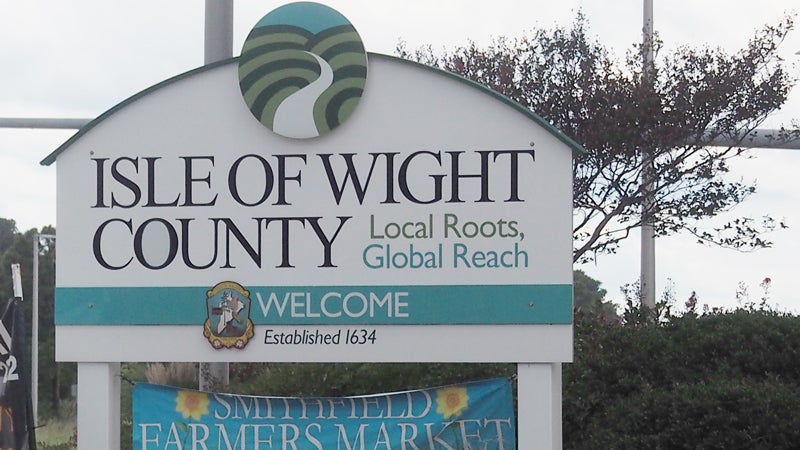Town planners endorse text change for Carollo development
Published 5:53 pm Friday, January 17, 2025

- Developer Vincent Carollo has submitted this conceptual illustration of his plans for 1.5 acres at Washington and James streets he purchased from Joseph Luter IV in September. (Images courtesy of Hopke Harrison Inc.)
Smithfield’s Planning Commission voted 6-1 on Jan. 14 to favorably recommend a change to the town’s zoning ordinance, which if approved by the Town Council would allow developer Vincent Carollo to move forward with his plans for just over an acre of land at Washington, James and Clay streets that he purchased from Joseph Luter IV last year.
Carollo, who bought eight lots in September that had been created from Luter’s 2021 purchase and subdivision of the formerly town-owned land, has applied for a text amendment to the downtown neighborhood residential zoning district. The requested verbiage would allow Carollo to seek a special use permit waiving the 5-unit-per-acre maximum density to allow for four attached single-family homes under condominium-style ownership and three duplex buildings, each with two units, for a total of 10 homes. Luter had proposed four single-family houses and one less duplex for a total of eight homes.
Carollo proposes calling the development “James Parc at Smithfield.” The text amendment, if approved by the Town Council, would allow Carollo to return with an application for a special use permit granting a density waiver.
“I would hate for the term ‘special use’ to be foremost in anyone’s mind as a negative to this, because there’s really not a negative that I see to this project as presented tonight,” said Commissioner GiGi Smith, who made the motion to recommend approval of Carollo’s requested text change. “There’s more room between the buildings. There is plentiful parking. The only time it’s really a problem with parking … is with a big event. There’s always going to be that. We want big events.”
Darren Cutler, the Town Council’s new liaison to the Planning Commission, cast the dissenting vote. Cutler, who campaigned for his council seat last year on a platform of reining in growth and development, said changing the town’s zoning ordinance at the request of a developer “sets precedent, and encourages other developers to ask for more.”
“Other developers still have to come before us if they want to have a special exception,” Smith said.
The council last year changed its zoning ordinance at the request of developer Brian Mullins, who requested language be added to the town’s attached residential zoning district definition to allow him to seek special use permits for elements of the “Cottages at Battery,” a 130-home development slated for 14 acres behind the Royal Farms convenience store at Battery Park Road and South Church Street. The Planning Commission held a Nov. 12 public hearing on Mullins’ subsequent application for six special use permits but has yet to vote on its recommendation to the council.
According to Community Development and Planning Director Tammie Clary, the reason Luter didn’t need a density waiver – but Carollo does – is the land hadn’t been subdivided at the time of Luter’s rezoning request, which had allowed him to count the entire 2.6 acres, including two buildings the town leases to Smithfield’s Veterans of Foreign Wars chapter and to The Children’s Center, in his density calculations. This equated to 4.6 units per acre with 20% of the land devoted to the extension of the formerly dead-end Clay Street, Clary said. Now that the land has been subdivided and the council has accepted the Clay Street extension as a town-maintained road, there’s less buildable land to work with, thus a higher density per acre.
Planning Commissioner Thomas Pope and John Hopke, an architect retained by Carollo, each asserted the Carollo proposal to be in keeping with the density of other homes in the town’s historic district, where the Carollo project would be located.
“Without the text amendment you can’t replicate the density that’s already in the neighborhood,” Hopke said.
At the time of Luter’s rezoning approval, the council had attached as a condition a preservation easement intended to protect two trees planted along James Street in the 1940s from being cut down. Hopke said in December that Luter’s plan had posed a “practical problem” as to who would own and be responsible for maintaining the trees — one of the factors that led Carollo to desire a revised conceptual plan.
Under Carollo’s plan, the two trees would be located in a common area owned by a homeowners association. Another key difference between Carollo’s and Luter’s plans is the elimination of most of the individual driveways Luter had proposed in favor of a shared driveway that would connect the extended Clay Street with Washington.





